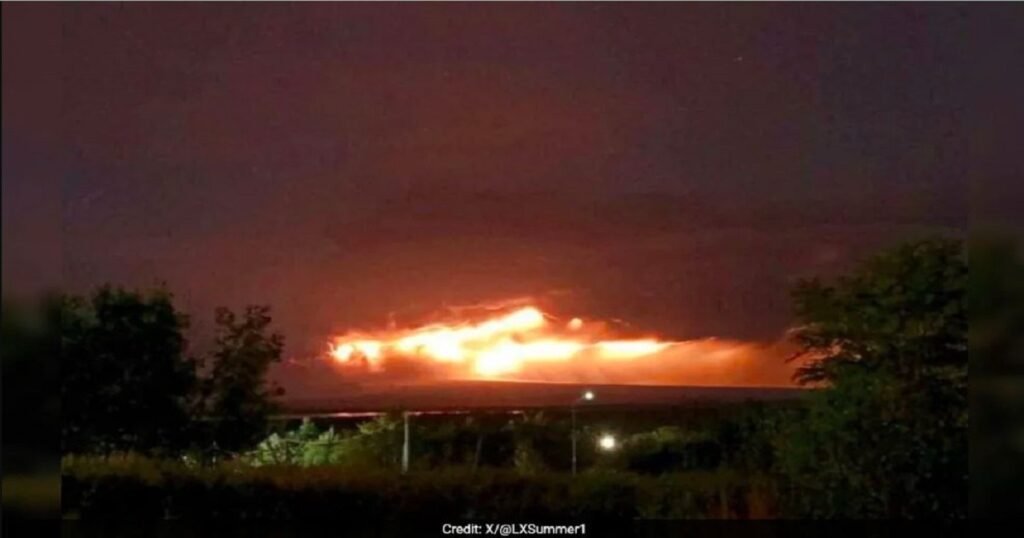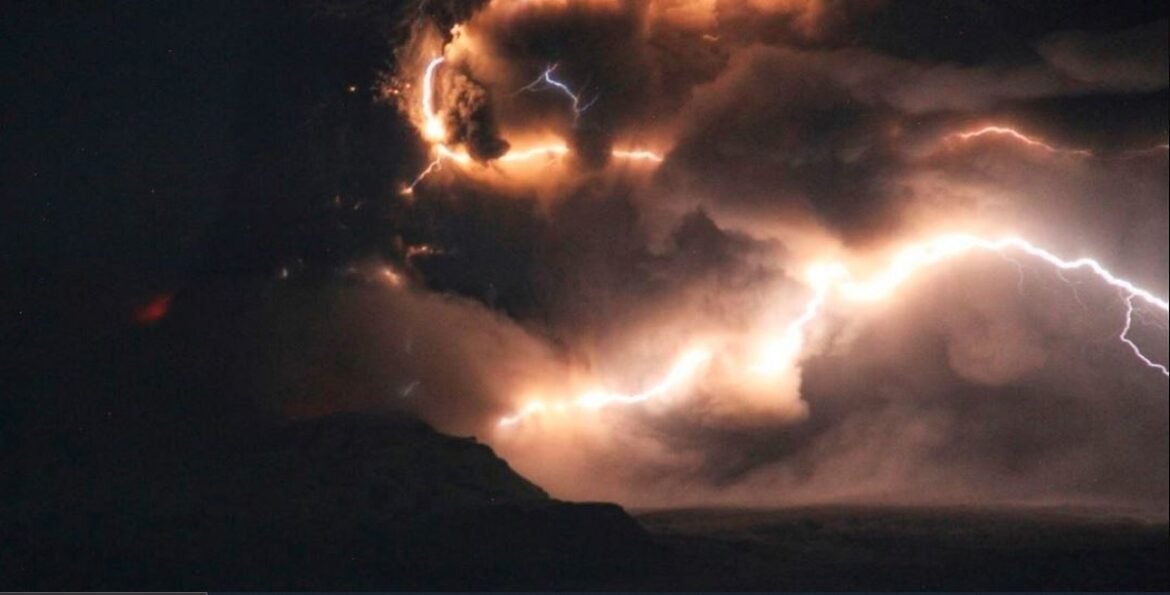Natural disasters, such as earthquakes and volcanic eruptions, have long been a source of fascination and fear. Recently, Russia has been experiencing heightened seismic activity, bringing attention to the potential for both earthquakes and volcanic eruptions in this vast region. The phrase “Russia earthquake volcano eruption” has increasingly appeared in headlines as scientists and authorities monitor these powerful natural phenomena closely.
Russia is home to some of the most active volcanic regions on Earth, with its Kamchatka Peninsula being one of the most volcanically active zones. This region, along with parts of Siberia and other areas near the Pacific Ring of Fire, is prone to both earthquakes and volcanic activity. In this article, we’ll explore the recent events, the science behind these natural occurrences, and how they impact both Russia and the world.
Why is Russia Prone to Earthquakes and Volcanoes?
Russia’s geographical position makes it susceptible to both earthquakes and volcanic eruptions. Much of the seismic activity is concentrated in its eastern regions, particularly on the Kamchatka Peninsula, which lies near the Pacific Ring of Fire. This area is known for tectonic activity as it is located near the boundary of the Eurasian Plate and the Pacific Plate. These tectonic plates are constantly moving, and when they collide or shift, they can cause earthquakes.
Additionally, the Kamchatka Peninsula is home to more than 30 active volcanoes. This volcanic activity is a direct result of subduction, where one tectonic plate slides beneath another. The Kamchatka region, therefore, experiences frequent earthquakes, which often lead to volcanic eruptions, making it a hotspot for these natural disasters.
The Russia earthquake volcano eruption combination is particularly alarming due to the interconnectedness of these two natural phenomena. Earthquakes can trigger volcanic eruptions by causing pressure changes within the Earth’s crust, and the reverse can also occur when volcanic activity induces seismic events.
Recent Events: Earthquakes and Eruptions in Russia
In recent months, Russia has experienced a series of seismic events, including notable earthquakes and volcanic eruptions. These incidents have drawn attention from scientists and the global community. For example, the Shiveluch volcano, one of Kamchatka’s most active volcanoes, erupted multiple times throughout 2023, spewing ash clouds high into the atmosphere. These eruptions were accompanied by a series of moderate earthquakes in the region.
The connection between earthquakes and volcanic eruptions in Russia is becoming more evident, as scientists believe the tectonic shifts responsible for the earthquakes are also increasing volcanic pressure. As a result, there is a growing concern that future seismic activity could lead to more powerful and frequent eruptions in the region.
The Science Behind Earthquakes and Volcanic Eruptions
The relationship between earthquakes and volcanic eruptions is complex but interconnected. Both are caused by movements within the Earth’s crust, particularly in areas where tectonic plates meet.
- Earthquakes occur when there is a sudden release of energy along fault lines, usually caused by the movement of tectonic plates.
- Volcanic eruptions happen when magma from the Earth’s mantle forces its way to the surface, often through fractures created by tectonic activity.
In regions like Kamchatka, these processes are closely linked. When an earthquake occurs near a volcanic region, it can weaken the structure of the volcano, potentially triggering an eruption. On the other hand, the buildup of magma beneath the surface can increase pressure, causing seismic activity.
One of the main reasons the Russia earthquake volcano eruption threat is particularly serious is because of the magnitude of these events. Earthquakes in Russia’s eastern regions can reach magnitudes of 6 or higher, which are capable of causing significant damage and triggering volcanic activity. Volcanic eruptions, in turn, can create ash clouds that impact air travel, agriculture, and the environment on a global scale.
The Global Impact of Russia’s Volcanic and Seismic Activity
When thinking about natural disasters, it’s easy to assume that their effects are localized. However, the impact of a Russia earthquake volcano eruption can be felt far beyond the country’s borders.
- Air Travel Disruptions: Volcanic ash clouds can severely impact air travel, as was seen during the Eyjafjallajökull eruption in Iceland in 2010, which grounded flights across Europe for days. Kamchatka’s volcanic activity similarly threatens flight paths across the Pacific.
- Environmental Impact: Volcanic eruptions can release large amounts of ash and sulfur dioxide into the atmosphere, contributing to climate changes by cooling the Earth’s surface.
- Tsunami Threats: Earthquakes near volcanic regions, particularly if they occur underwater, can trigger tsunamis that impact coastal areas, both in Russia and other Pacific nations.
With its strategic location, Russia plays a crucial role in monitoring seismic and volcanic activity in the northern Pacific. Scientists are keeping a close eye on any signs of increased activity that could indicate a larger, more catastrophic event.
Preparing for Natural Disasters in Russia
While it’s impossible to prevent natural disasters like earthquakes and volcanic eruptions, preparation is key to minimizing their impact. Russian authorities have implemented several measures to help residents and visitors stay safe:
- Monitoring Systems: Russia has an extensive network of seismic and volcanic monitoring stations. These stations collect data that can help predict future eruptions or earthquakes.
- Evacuation Plans: In regions like Kamchatka, where volcanic activity is a constant threat, evacuation plans are in place to help people quickly move to safer areas in the event of an eruption.
- Public Awareness Campaigns: Education is a key component in preparing for natural disasters. Public awareness campaigns in high-risk areas teach residents how to stay safe during an earthquake or eruption.
International collaboration is also critical. Russian scientists work with global experts to monitor seismic and volcanic activity, sharing data that helps predict and mitigate the effects of these natural disasters.

FAQs About Russia Earthquake Volcano Eruption
Russia’s eastern regions, particularly the Kamchatka Peninsula, are part of the Pacific Ring of Fire, a tectonically active area where the Pacific Plate meets the Eurasian Plate. The movement of these plates causes frequent earthquakes and volcanic activity.
The Kamchatka Peninsula is the most volcanically active region in Russia, with over 30 active volcanoes. Other areas, such as parts of Siberia and the Kuril Islands, also experience significant seismic activity.
Yes, an earthquake can trigger a volcanic eruption by causing shifts in the Earth’s crust, which can increase pressure within a volcano. Similarly, volcanic activity can also lead to seismic events.
Volcanic eruptions, particularly in Kamchatka, can have global consequences. Ash clouds from eruptions can disrupt air travel, affect climate patterns by cooling the Earth’s surface, and even threaten coastal areas with tsunamis if the eruption occurs underwater.
People living in high-risk areas should follow local authorities’ evacuation and safety guidelines. It’s essential to have an emergency kit prepared, stay informed through monitoring systems, and know the safest routes for evacuation.
Conclusion
The combination of Russia earthquake volcano eruption poses a significant challenge for both scientists and residents in affected regions. While these natural phenomena are part of the Earth’s geological processes, their impact on human life, infrastructure, and the environment cannot be overstated. As Russia continues to experience seismic and volcanic activity, it remains vital for authorities, researchers, and communities to work together to monitor, prepare for, and mitigate the effects of these powerful forces of nature.
Understanding the science behind these events, staying informed, and following safety protocols are key to reducing the risks associated with natural disasters in Russia and beyond.



